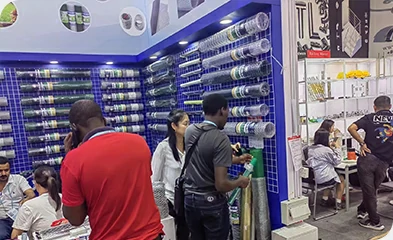 TEL:
+86-13102802206
TEL:
+86-13102802206
 Email:
fencenetting@china.com
Email:
fencenetting@china.com
 Language
Language
 TEL:
+86-13102802206
TEL:
+86-13102802206
 Email:
fencenetting@china.com
Email:
fencenetting@china.com
 Language
Language


The Evolution and Applications of Barbed Wire Plastic
Barbed wire, a product traditionally made from metal, has evolved significantly over the years. With advancements in materials science, plastic barbed wire has emerged as a versatile and innovative alternative. This development not only revolutionizes the agricultural and security industries but also offers numerous environmental advantages.
Understanding Barbed Wire
Historically, barbed wire was invented in the late 19th century as a solution to the unregulated cattle grazing on American plains. Its sharp protrusions deterred livestock from crossing property boundaries, making it an essential tool for ranchers. Over time, the use of barbed wire expanded into various sectors, including agriculture, military, and industrial applications, serving primarily as a barrier for containment and security.
Transition to Plastic Barbed Wire
The transition from traditional metal barbed wire to plastic variants is rooted in several advantages. The most striking benefit of plastic barbed wire is its lightweight nature, which simplifies installation and reduces transport costs. Unlike its metal counterpart, plastic barbed wire does not corrode, making it suitable for various environmental conditions, including coastal areas where saltwater can degrade metal.
Furthermore, plastic barbed wire is often more flexible than metal wire, allowing it to adapt better to uneven terrain or obstacles, a crucial feature for agricultural fencing. This flexibility also results in reduced risk of injury during installation and maintenance, as there are no sharp edges that can cause cuts or scrapes.
Environmental Impact

In an era where sustainability is a significant concern, the environmental implications of plastic barbed wire are noteworthy. Many manufacturers now produce this type of fencing from recycled materials, contributing to waste reduction and promoting a circular economy. Additionally, plastic barbed wire can be manufactured in various colors, providing aesthetic flexibility in landscaping and property delineation, which can be particularly appealing to residential areas.
Moreover, the longevity of plastic materials means less frequent replacements, reducing the overall consumption of resources. This resilience against environmental wear and tear is a remarkable benefit over metal barbed wire, which typically requires more frequent maintenance and replacement, leading to increased environmental degradation.
Applications Across Industries
Plastic barbed wire has found utility in various applications beyond agriculture. In the realm of security, it provides an effective deterrent for intruders in industrial complexes, prisons, and military installations. Its visibility can be enhanced through color choices and added features like reflective coatings to improve visibility at night or in low-light conditions.
In landscaping and garden design, plastic barbed wire serves as an effective barrier without compromising aesthetic appeal. Its available colors can help harmonize with the natural surroundings, making it a popular choice among homeowners seeking both function and style.
Conclusion
The evolution of barbed wire from a simple metal product to a versatile plastic alternative represents a significant advancement in material use and application. By offering a lightweight, durable, and environmentally friendly solution, plastic barbed wire has become an indispensable tool across various sectors. As industries continue to innovate and prioritize sustainability, the future of fencing solutions looks bright with plastic barbed wire at the forefront. Its myriad advantages not only meet practical needs but also align with the growing commitment to environmental stewardship, reflecting a holistic approach to modern fencing solutions.